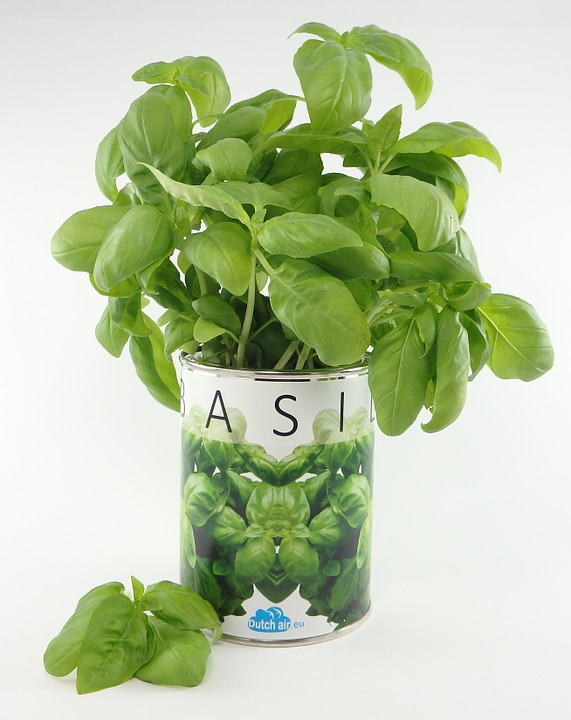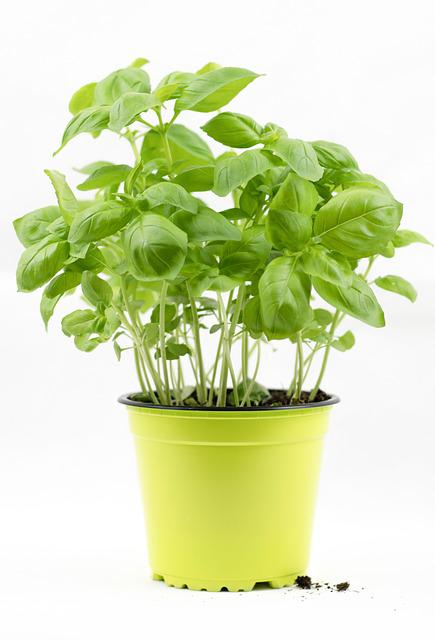Let’s talk about cooking with culinary herbs, their tastes, and how to pair them with certain foods. The huge variety of culinary herbs have vastly different flavors, from earthy and savory to bright and fresh. When it comes to cooking, it’s important to know which flavors will complement your dish and which will be overpowering. (We also cover some spices here >)
 Herbs like rosemary and thyme have strong, pungent flavors that can easily dominate a dish if you’re not careful. These herbs are best used sparingly, or in dishes where their flavor will be offset by other ingredients. Rosemary is delicious in roasted lamb dishes, while thyme is perfect for flavoring chicken or fish.
Herbs like rosemary and thyme have strong, pungent flavors that can easily dominate a dish if you’re not careful. These herbs are best used sparingly, or in dishes where their flavor will be offset by other ingredients. Rosemary is delicious in roasted lamb dishes, while thyme is perfect for flavoring chicken or fish.
On the other hand, when cooking with culinary herbs like basil and mint , they have more delicate flavors that can be easily lost in a dish if they’re not used correctly. These herbs are best added at the end of cooking, so their flavor remains fresh and bright.
Basil is lovely in pesto (here’s a recipe) or tomato sauce, while mint is perfect for adding a refreshing touch to desserts or cocktails.
Anise-flavored herbs have a licorice-like flavor that is both sweet and slightly bitter. These herbs are often used in baking, as their flavor pairs well with sweet recipes. Some of the most popular anise-flavored herbs include fennel, chervil, anise seed, and star anise. These herbs can be used in sweet or savory dishes, although they are most commonly used in sweets. Fennel is delicious in baked goods like breads and cookies, while anise seed is often used to flavor cakes and other desserts. Star anise is a common ingredient in Chinese cooking, and is used to flavor soups, stews, and braised dishes. Chervil has a delicate, anise-like flavor that is both sweet and slightly bitter. It is often used in French cooking, and its flavor pairs well with fish, poultry, and vegetables. Chervil is also lovely in salads and vinaigrettes.
 Other herbs in the Anise family include:
Other herbs in the Anise family include:
- Fennel
- Anise seed
- Star anise
- Chervil
- Sweet cicely
- Sweet woodruff
Borage, and chamomile have a delicate, floral flavor that is perfect for flavoring desserts and cocktails. These herbs are also lovely in salads and vinaigrettes.
Bays have a strong, pungent flavor that is similar to rosemary. They are often used in Mediterranean cooking, and their flavor pairs well with fish, poultry, and vegetables. Bays are also lovely in soups and stews.
Burnet has a slightly sweet, cucumber-like flavor that is refreshing and bright. It is often used in salads and vinaigrettes, and its flavor pairs well with poultry and fish.
Caraway has a sharp, anise-like flavor and is commonly used in European cuisine. It is often used to flavor breads, cheeses, and sauerkraut.
Bishop’s weed has a strong, pungent flavor that is often compared to mustard or horseradish. It is commonly used in Indian cuisine, and can be added to curries, chutneys, and other dishes.
Celery Seed (Apium graveolens) has a mild, celery-like flavor and is often used as a seasoning in soups, stews, and salads (I like to add it to my egg salad, too). It can also be used to make a homemade celery salt.
Cilantro (Coriandrum sativum) has a fresh, citrusy flavor and is commonly used in Mexican and Asian cuisine. It is often used in salsa, guacamole, and other dishes. It has a bright, fresh flavor that is similar to parsley. Its flavor pairs well with poultry, fish, and vegetables. Cilantro is also lovely in salads.
Sage, oregano, and tarragon are all members of the mint family, and they share a similar flavor profile. These herbs have a slightly sweet flavor with a hint of mint. They are commonly used in Italian cooking, as their flavor pairs well with tomato-based dishes. Sage is delicious in pasta sauce, while oregano is perfect for flavoring pizza or chicken. Tarragon is a versatile herb that can be used in many different dishes. It is commonly used in French cooking, and its flavor pairs well with fish, poultry, and vegetables. Tarragon is also lovely in salads and vinaigrettes.
Cooking with Culinary Other in the Sage family also includes:
- Clary Sage (more floral, sweeter)
- Garden Sage (a lovely fragrance)
- Pineapple Sage (more delicate, softer flavor)
Capers have a salty, tangy flavor that is similar to olives. They are often used in Mediterranean cooking, and their flavor pairs well with fish, poultry, and vegetables. Capers are also delicious in salads and vinaigrettes.
Dill is in the parsley family of herbs and has a bright, herbaceous flavor that is perfect for flavoring fish, poultry, and vegetables. It is also lovely in salads and vinaigrettes.
Parsleys have a mild, grassy flavor that is perfect for flavoring soups, stews, and sauces. They are also lovely in pesto and herb butter. They include:
- Caraway
- Celery
- Dill
- Fennel
- Parsley
Marigolds, lavender, geraniums and lovage have a citrusy, lemony flavor that is perfect for flavoring fish, chicken, and salads. These herbs are also lovely in teas and iced drinks.
Mints have a refreshing, cooling flavor that is perfect for flavoring desserts, cocktails, and teas. They are also lovely in salads and as a garnish. Herbs in the mint family include:
- Basil
- Catnip
- Lavender
- Marjoram
- Oregano
- Spearmint
- Summer Savory
- Tarragon
- Winter Savory
Tarragon has a slightly sweet flavor with a hint of mint. It is commonly used in French cooking, and its flavor pairs well with poultry, fish, and vegetables. Tarragon is also lovely in salads and vinaigrettes.
Mustard is a herb with a strong, pungent flavor that is often used as a condiment. It can vary in taste depending on the type of mustard seed used, but is generally quite sharp and tangy. There are many recipes that use mustard as an ingredient, such as mustard chicken or mustard greens.
The flavor of cumin is earthy and nutty, with a bit of spice. It’s often used in savory dishes like curries and stews, as well as in some baked goods. Cumin can be used ground or whole. When using ground cumin, start with a small amount and add more to taste. Whole cumin seeds can be roasted before grinding to release their flavor.
Garlic, ginger, and lemongrass are all members of the onion family, and they share a similar flavor profile. These herbs have a strong, pungent flavor that is perfect for flavoring savory dishes. Garlic is commonly used in Italian or Chinese cooking, while ginger is often used in Asian cooking. Lemongrass is a common ingredient in Thai cooking, and its flavor pairs well with poultry, fish, and vegetables.
- Chives
- Garlic
- Leeks
- Onions
- Shallots
Horseradish, mustard, and wasabi are all members of the cabbage family, and they share a similar flavor profile. These herbs have a strong, pungent flavor that is perfect for flavoring savory dishes. Horseradish is often used in British cooking, while mustard is common in French or American cooking. Wasabi is a common ingredient in Japanese cooking, and its flavor pairs well with sushi or sashimi.
Lavender, rosemary, bay laurel, and thyme are all members of the mint family, and they share a similar flavor profile. These herbs have a slightly sweet flavor with a hint of mint. They are commonly used in Mediterranean cooking, and their flavor pairs well with fish, poultry, and vegetables. Lavender is also lovely in desserts, while rosemary is perfect for flavoring meat or potatoes. Thyme is a versatile herb that can be used in many different dishes. Its flavor pairs well with poultry, fish, and vegetables. Thyme is also lovely in soups and stews.
Lemon balm, lemon verbena, and other lemony herbs have a strong, citrusy flavor that is perfect for flavoring desserts and cocktails. These herbs are also lovely in salads and vinaigrettes.
Marjoram, oregano, and thyme are all members of the mint family, and they share a similar flavor profile. These herbs have a slightly sweet flavor with a hint of mint. They are commonly used in Mediterranean cooking, and their flavor pairs well with fish, poultry, and vegetables. Marjoram is also lovely in soups and stews, while oregano is perfect for flavoring pizza or pasta. Thyme is a versatile herb that can be used in many different dishes. Its flavor pairs well with poultry, fish, and vegetables. Thyme is also lovely in soups and stews. Other flavors of thyme include:
- Lemon Thyme (stronger citrus aroma and taste)
- Orange Thyme (aroma like a freshly peeled orange)
- Silver Thyme (more robust)
The Mustards, Onions, Parsleys, and Saffron, all have a strong flavor that is perfect for flavoring savory dishes. These herbs are also lovely in salads and vinaigrettes.
Nasturtium has a peppery flavor that is perfect for flavoring salads and salsas. It is also lovely in soups and stews.
Rue has a bitter flavor that is perfect for flavoring savory dishes. It is also lovely in salads and vinaigrettes.
Saffron has a slightly sweet flavor with a hint of mint. It is commonly used in French cooking, and its flavor pairs well with poultry, fish, and vegetables. Saffron is also lovely in salads and vinaigrettes.
The Sorrels have a sour flavor that is perfect for flavoring salads and salsas. They are also lovely in soups and stews. Culinary herbs in the sorrels include:
- Lemon Balm
- Mint
- Parsley
- Rosemary
- Sage
- Savory
- Thyme
There are countless herb flavors out there! Some other popular ones include: anise, bay, chamomile, cilantro, coriander, cumin, dill seed, fennel seed, garlic, ginger, horseradish, juniper berry, lavender, marjoram, nutmeg, oregano, paprika, peppermint, poppy seed, rosehip, saffron, thyme, and turmeric.
There are endless possibilities when it comes to recipes that utilize culinary herb flavors. Get creative in the kitchen and experiment with different flavor combinations to find what you like best! herb-flavored oils, vinegars, and butters make great additions to any dish, while herb-infused simple syrups can add a touch of sweetness (and flavor) to cocktails and desserts. Fresh herbs can be used to top off just about anything, from salads and pizzas to soups and grilled meats. Dried herbs are perfect for adding flavor to roasted vegetables, homemade breads, and spice rubs.
No matter what herb flavors you choose to use in your cooking, make sure to use them sparingly at first. You can always add more, but you can’t take away once the flavor is infused!
There are many different types of culinary herbs that can be used in cooking, but some of the most popular include basil, oregano, rosemary, thyme, and sage. Each herb has a unique flavor that can enhance the taste of various dishes.
Here are some less known and less used culinary herbs that taste great…
- Kaffir is a herb that is commonly used in Thai cuisine. It has a strong citrus flavor and can be used in curries, soups, and stir-fries.
- Lovage is an herb that has a celery-like flavor. It can be used in soups, salads, and as a garnish.
- Fenugreek is an herb that has a sweet, nutty flavor. It is commonly used in Indian cuisine, and can be used in curries, dals, and vegetable dishes.
- Curry leaves are a herb that is commonly used in Indian and Sri Lankan cuisine. They have a strong flavor and can be used in curries, soups, and stews.
- Lemon balm is a herb that has a lemon flavor. It can be used in teas, salads, and as a garnish.
- Lime leaves are a herb that has a citrusy flavor. They can be used in curries, soups, and stir-fries.
So, the next time you’re cooking with herbs, keep these flavor tips in mind and experiment until you find the perfect combination for your taste.
Benefits from Cooking with Culinary Herbs…
There is no definitive answer to the question of the benefit of cooking with these culinary herbs. It will vary depending on the herb itself. Some people find that they get more benefit from consuming herbs in cooked dishes, as the heat helps to release more of the herb’s active compounds. Others find that they are able to digest herbs better in supplement form. Ultimately, it is up to each individual to figure out what works best for them. If you are interested in reaping the maximum benefits from the herbs you cook with, it is best to consult with a qualified herbalist or naturopathic doctor.
Bon appetit!
 P.S. Stay tuned to Herbs and Natural Remedies because, coming up, we will be posting about growing your culinary herbs!! (You might want to get your seeds ready! We recommend Non-GMO seeds, like these >
P.S. Stay tuned to Herbs and Natural Remedies because, coming up, we will be posting about growing your culinary herbs!! (You might want to get your seeds ready! We recommend Non-GMO seeds, like these >
Can you imagine? Cooking with Culinary Herbs you grow yourself? Now, that’s Fresh! (And they are lovely plants, too!)

